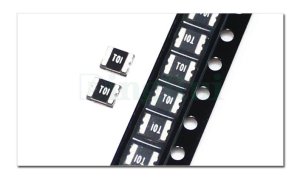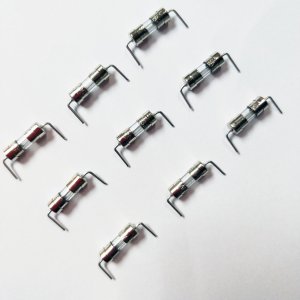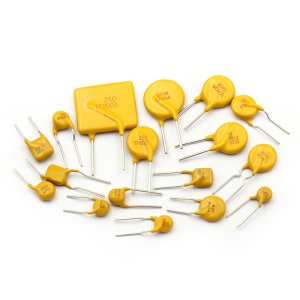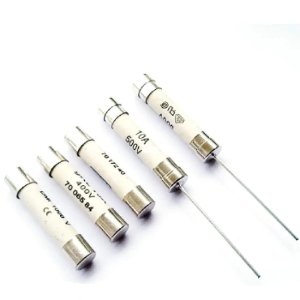Are you wondering how to keep your gadgets safe from fast power surges or overloads? PCB fuses behave like silent heroes in your circuits to ensure all your gadgets remain safe.
These tiny but mighty components are always ready to jump into action when electrical currents go haywire and maintain proper function to prevent damage.
Understanding how PCB fuses work and choosing the right one for your needs can seem tricky. But fear not as this article is here to demystify PCB fuses.
By the end, you’ll know precisely how to choose and use these protective devices to keep your gadgets humming along without a hitch.
So, let’s begin.
What are PCB Fuses
Before getting straight to the role of PCB fuses, it’s essential to first understand what they are in detailed manner.
A PCB fuse is just about one of the catch ingredients in defending electronic circuits against the state of overcurrent condition.
They are designed to interrupt the flow of current in a circuit during excessive currents with very high amperages, thus safeguarding many sensitive components like transistors, diodes, and integrated circuits from damage.
Types of PCB Fuses
These fuses come in a variety of different types to suit a wide variety of applications:
1.Surface Mount Fuses (SMD Fuses)

These compact fuses are directly soldered onto the PCB surface, making them ideal for modern electronic designs where space efficiency is crucial.
2.Leaded Fuses

Lead fuses have wire leads for through-hole mounting to the PCB and, in some more classic circuit configurations, can have better-rugged applications and are much easier to replace than surface mount fuses.
3.Resettable Thermal Fuses (PPTC)
More specifically known as polymeric PTC fuses, PPTC fuses automatically reset when they trip in overcurrent conditions. They find applications where protection involves temporary faults of consumer electronics and telecommunication equipment.

4.Fast-Blow and Slow-Blow Fuses

These fuse types differ in reaction time to an overcurrent condition. Fast-blow fuses open the circuit quickly if the current is greater than the rated threshold. Conversely, slow-blow fuses have some tolerance to temporary overloads before blowing.
Which one to use will significantly depend on the specific circuit requirements and the type of protection needed.
Each type of PCB fuse offers distinct advantages depending on the application’s demands for size, resetability, and response to overcurrent events.
PCB Fuse Characteristics
PCB fuses possess several key characteristics that determine their suitability for different applications:
- Current Rating
The current rating specifies the maximum current the fuse can tolerate without blowing. Very importantly, implementing a fuse must be selected at a current rating only slightly more than the maximum current flowing in the circuit for adequate protection.
- Voltage Rating
The voltage rating is the maximum voltage that the fuse may have to stand until failure. Making sense, therefore, would be to pick a fuse with a voltage rating at least as high as the operating voltage in the circuit to prevent breakdown, which might be electrical.
- Time-Current Curve
The time-current curve illustrates the fuse’s response to varying levels of overcurrent. The time-current characteristic of the fuse shows the life elapsed before the fuse operates at each current level. This characteristic helps in setting a proper response of the fuse against overcurrent conditions, both when immediate interruption is required by picking a fast-blow and when dealing with transient overcurrent by picking a slow-blow.
- Physical Size Considerations
There are many physical sizes of PCB fuses, which are of great importance in fitting in the confined space available on a circuit board. Although big sizes can mean higher ratings in the current flow, the catch is that it is proper real estate on the PCB
Physical size is thus essential in balancing out the spatial constraints in an appropriate layout of a PCB.
Now that you know the PCB fuse essentials, it is the right time to see how to choose your project’s proper PCB fuse.
Choosing the Right PCB Fuse
Now, some of the essential steps toward choosing an appropriate PCB fuse to protect a circuit effectively are as follows:
1.Determine Maximum Current Draw
Identify the maximum current that your circuit will draw under normal operating conditions. This helps in selecting a fuse with an appropriate current rating that can handle these currents without blowing unnecessarily.
2.Consider Operating Voltage
Determine the voltage at which your circuit is going to operate. Then, choose the fuse rating for voltage equal to or higher than the operating voltage of the circuit and ensure reliable protection over overcurrent situations.
3.Select Appropriate Response Time
Decide if your application requires a fast-blow fuse or a slow-blow fuse. Fast-blow fuses respond very rapidly to an overcurrent condition. They can therefore, be used for the protection of sensitive state-of-the-art electronic components with shallow safe operating areas.
On the other hand, slow-blow fuses tolerate a few overcurrent periods of given intensity before responding. This makes them particularly suitable in applications where there are inrush currents.
4.Fit Within PCB Layout Constraints
Consider the physical size of the fuse because it needs to be accommodated in the available space on your PCB layout. In this light, you will be blowing the size of the fuse and the value concerning its rating so that you meet both protection and space requirements.
5.Consult Fuse Datasheets
Refer to fuse datasheets for detailed specifications like current and voltage ratings, time-current characteristics, physical dimensions, and safety margins. In other words, datasheets for fuses should be available to give all the data essential to make a suitable choice.
By following these steps and consulting fuse datasheets, you can confidently choose the right PCB fuse that ensures optimal protection and reliability for your electronic circuits.
PCB Fuse Applications
Some of the typical uses of a PC board fuse are:
- Overload Protection in Power Supplies
These PCB fuses secure power supply units from overloading conditions by disconnecting the excess current, which can, in the absence of this protection, damage components or circuit failure. They hold stable operation and long service life of units supplying power to almost all electronic products.
- Safeguarding Sensitive Electronic Components
PCB fuses protect electronic circuits where the components surrounding them are sensitive—touching on things such as microcontrollers, ICs, or even sensors, which can undergo permanent damage under overcurrent conditions —by interrupting excess current flow fast, thereby proving the integrity and functionality of these critical components.
- Current Limitation in Specific Circuit Sections
They are often used to limit current flow in only a part of the circuit and hence avoid overheating that may cause fire hazards. They therefore assure that current levels never rise beyond danger levels, significantly where the load conditions in a circuit may either vary or where the different components may be at varied levels of protection.
Reasons Why PCB Fuses Might Blow
Understanding why PCB fuses blow is crucial for diagnosing and preventing circuit failures:
- Overcurrent Conditions
The main reason for blowing PCB fuses is when the current passing through a circuit is more than the rated capacity of the fuse. It might be from a sudden momentary electrical current spike due to a short circuit, power surge, or other such events.
- Incorrect Fuse Selection
Using a fuse with a current rating lower than required for the circuit increases the risk of premature blowing. Conversely, a fuse with a rating much higher than necessary may fail to protect the circuit adequately during overcurrent situations.
- Faulty Components Causing Excessive Current
Malfunctioning or deteriorating electronic components within the circuit can draw more current than normal, leading to overloading of the fuse. Identifying and replacing faulty components is essential to prevent recurring fuse failures.
By addressing these common causes of PCB fuse blowouts, you can enhance the reliability and longevity of electronic circuits, ensuring continuous operation without unexpected interruptions.
Troubleshooting When a PCB Fuse Blows
When a PCB fuse blows, follow these steps to diagnose and resolve the issue:
1.Visual Inspection of the Blown Fuse
So, firstly, check on the damaged fuse visually. It needs to look for different compliance in filament or other discoloration, signs that this element hardly blew with high overcurrents.
2.Checking for Shorted Components in the Circuit
After taking the power away, check the circuit for any elements that might have been shorted or failed. They may result in a very high current to flow—higher than the average rate—which blows the fuse.
3.Correct Replacement and Addressing Root Causes
Replace the blown fuse with a new one of a similar type and rating. Be sure that you have found and, if possible, corrected the underlying cause of the overcurrent condition—replacing damaged components, if need be, or fixing wiring problems—before restoring power.
4.Recommendation to Consult a Qualified Technician
In complex cases of fault or constant blowing of a fuse after properly being replaced, it is recommended that a qualified technician or engineer be consulted.
He can do a detailed electrical test and bring along specialized diagnostics equipment for accommodated testing and repair the circuit to ensure that it does not go faulty any other time shortly.
With those presented steps, one can effectively manage and resolve PCB fuse blowouts with some help from an expert if deemed necessary. It ensures that the whole electronic system works under reliable and safe conditions.
Conclusion
In conclusion, PCB fuses are crucial for protecting electronic devices from overcurrents, ensuring they work smoothly. By understanding their types, features, and uses, you can pick the right fuse confidently.
Remember to consider factors like current ratings, voltage needs, and how quickly they react to problems.





